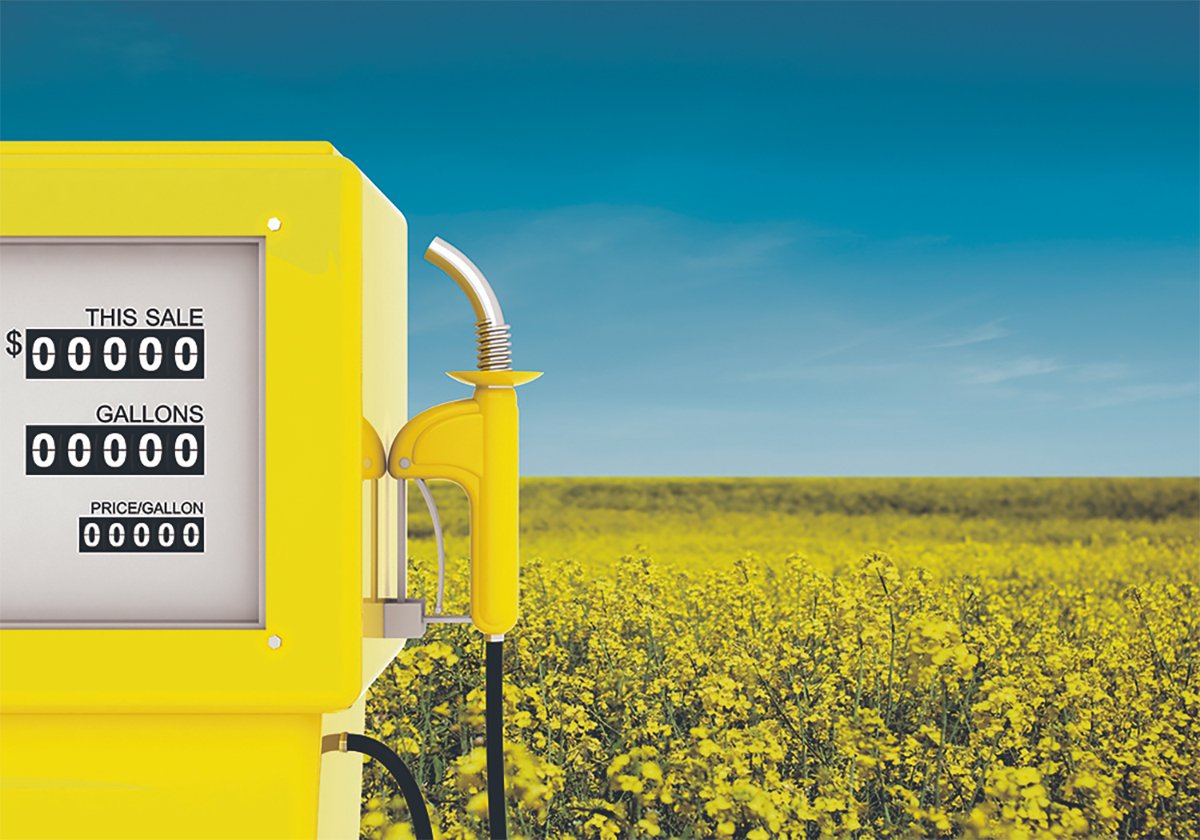Desmond Plewman has many years of cattle marketing experience as an auctioneer in rural Manitoba.
But here’s the kind of marketing experience he has been giving cattle producers since May 20:
“Basically nothing.
“I can tell them what the market was last week, but that’s it. For the last 10 months I’ve had to say that ‘I’m not going to give you advice. I can’t tell you whether you should sell or not sell.’ “
That’s because since the Canadian BSE cow was revealed on May 20, 2003, the Canadian cattle market has been as volatile as the Middle East.
Read Also

Biofuel sector happy with federal budget
Advanced Biofuels Canada says new Biofuel Production Incentive is a lifeline until CFR amendments are in place.
“The market can be 15 cents (per pound) different from one Tuesday to the next Tuesday,” said Plewman, who works for Grunthal Auction Mart, which has sales on Tuesdays.
Jim Robb of the U.S. Livestock Marketing Information Center said the Canadian and Am-erican BSE cows have thrown firecrackers into meat markets for a year now.
“The volatility in the futures market has been unprecedented,” said Robb.
Figuring the figures
Supply and demand calculations by farmers, processors, retailers and speculators not only have to analyze how much meat is standing around on four hoofs on U.S. and Canadian farms, but also whether the Canadian cattle will be part of the American supply situation, whether Japan will begin buying North American cattle again, and whether more BSE cattle will be found.
Some have been optimistic and believe the border restrictions will soon clear up. That kind of optimism is behind what Plewman describes as the “fake market” of much of March and April, when speculators began bidding up Canadian feeder prices, betting on the U.S. border opening soon.
Holding the optimists in check have been the pessimists, who jump on any bad news to dump cattle.
Positive light
Overall, the market has reacted to the BSE situation remarkably opti-mistically, said Ron Plain, a meat market analyst at the University of Missouri.
“The market in the States has treated both (BSE cow) announcements as temporary situations,” said Plain.
Oddly, after May 20 that optimism kept American prices from rising as fast as they could have, Plain said. Speculators in the American market decided that the Canadian border would soon reopen, so they didn’t bid prices up too high.
Cattle feeders also thought the border closure was temporary, so instead of holding onto their cattle they sold them as soon as they could, reckoning that once Canadian cattle were back in the market, the price would fall.
But by September 2003, when some Canadian beef imports to the United States were allowed, U.S. fed cattle numbers had fallen so low that even with the added Canadian meat, prices stayed high through the winter and spring, Plain said.
Robb said optimism about the U.S. border opening quickly buoyed the Canadian market, but also made it more volatile. Every glimmer of renewed trade pushed prices up, and every bit of bad news kicked it down.
“It’s disruptive,” Robb said.
Plewman said the volatility has made producers anxious, because if bad news hits the day their animals go to market it could mean sudden big losses for them in the ring.
“After May 20, the floor fell out of the market, and people remember that.”















